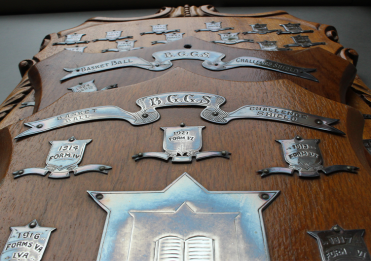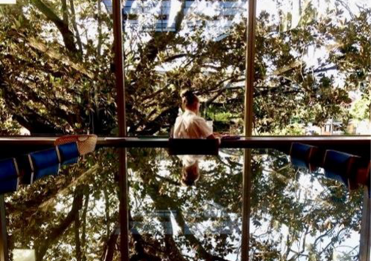How and why did the Girls Grammar 1962 gymnasium acquire what looked like a wood, steel, and rope moveable installation along one wall? What was this object? Why did it have three levers with wheels that allowed it to move? What on earth was it used for? Perhaps a review of the history of gymnastic activity at this School might shed light on these intriguing questions.
In 1874, Mr Thomas Harlin, Headmaster and Honorary Secretary to the Board of Trustees of Brisbane Grammar School, wrote to Brisbane’s Colonial Secretary to request approval of 15 proposed regulations for the new girls’ school. The very existence of the girls’ school in the colony was ground-breaking—figuratively at first, and then literally when the School settled on its present site in 1884. However, the regulations were fairly standard for the time, outlining as they do: proposed dates of the School year, subjects to be studied, and tuition fees (four pound four shillings per quarter). Nestled amongst these standard regulations (innocuously numbered ‘10’) is a concept that was radical for the time, that: ‘Gymnastics shall be taught, and no girl shall absent herself from gymnastics practice without the permission of the Lady Principal’.
While some other independent private girls’ schools at the time offered forms of physical training, these offerings were non-compulsory and attracted additional fees. It was the Trustees’ insistence that gymnastics (an all-encompassing term for organised physical instruction) be a mandatory component of the curriculum that set Girls Grammar apart. With much encouragement from the early Lady Principals, this initial physical activity consisted of drill work and dumb-bell exercises. Miss Sophia Beanland, Lady Principal from 1882 to 1888, awarded the first prizes for gymnastics in 1885 and advocated for the construction of appropriate facilities stating, ‘the lack of a gymnasium is a real want, and I cannot feel satisfied until it is supplied’.
Despite there being resistance to her advocacy from some at the boys’ school, the gymnasium was built in the final year of her tenure. The gymnasium was to remain in active service for many decades. By modern standards, it was not particularly inviting. In the context of education, what had been known as Gymnastics was beginning to be known as Physical Education and Meg Rorke, appointed in 1944, was the School’s first full-time Physical Education specialist. She recalled that the gymnasium was a rectangular building with an unpainted exterior, and interior walls that were solid wood to waist height and then lattice work to the ceiling. The inside also featured two rows of hazardous posts supporting the roof. Equipment was sparse, featuring a balance beam, rings, a travelling ladder suspended from the ceiling, parallel bars, vaulting horse, and a mat. In earlier decades, students, using water from a tap, had to wet hessian bags which were then pulled across the floor before each class to wipe off the soot from passing trains. In a photograph from c1912, Josephine Bancroft’s face betrays nothing of the chore of wiping soot from the floor, but she does seem to be enjoying herself as she hangs on the rings in the gymnasium, with the parallel bars, ladder, and fellow classmates in the background.
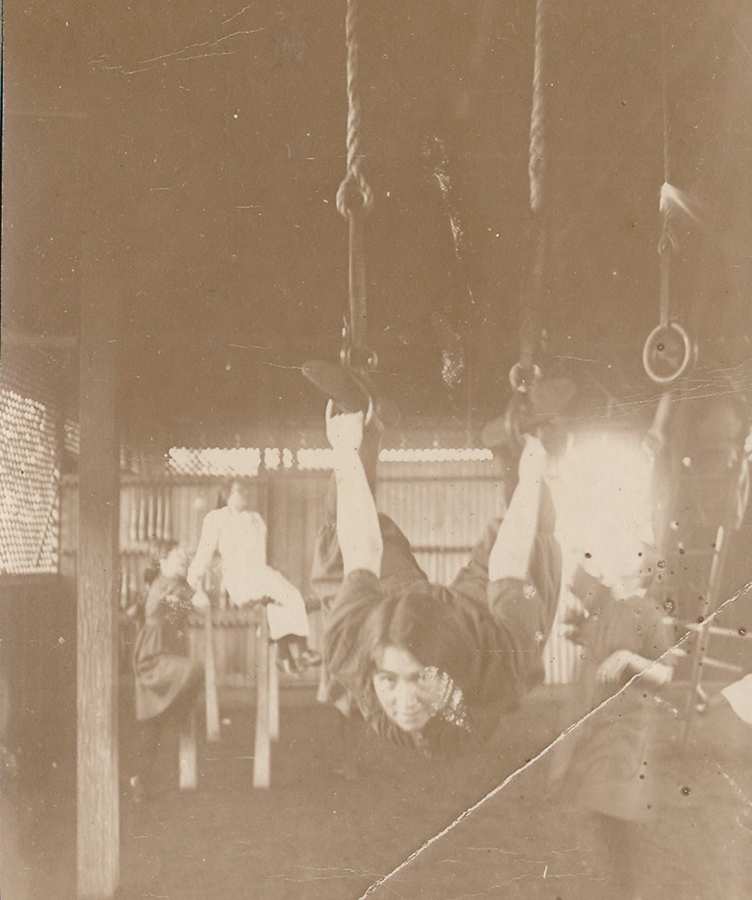
1912—a very flexible Josephine Bancroft
During the first half of the 20th century, students of Gymnastics and Physical Education enjoyed a greater range of activities. Several sports, including Running, Swimming, Netball, and Tennis appeared alongside traditional movement and exercises and, even though it retained its place at the centre of Physical Education, the ageing gymnasium was now woefully inadequate.
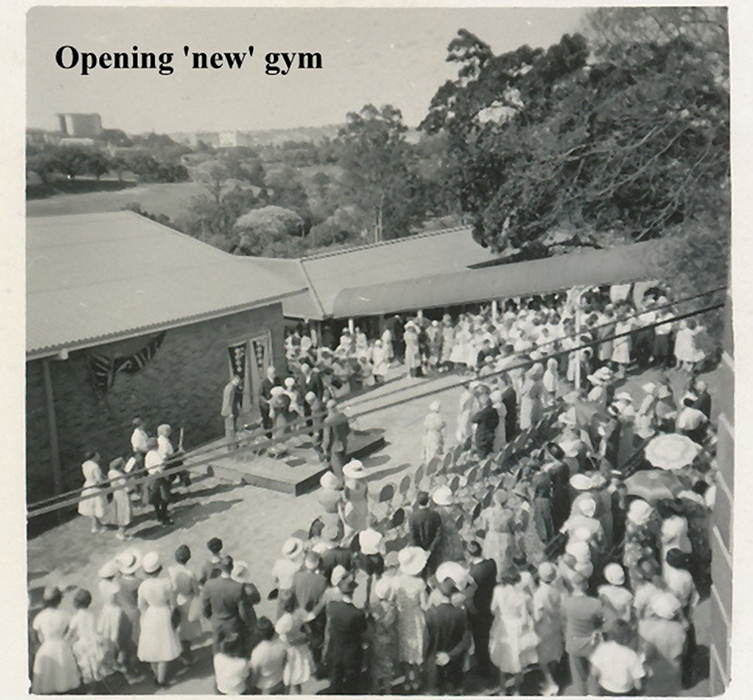
1962—opening of the new gymnasium
A significant upgrade to the School’s facilities occurred with the construction of a pool in 1960 and a new gymnasium, built on the site of the original, in 1962, no doubt under the watchful eyes of the Physical Education teachers, Noela Carr (1958) and Ruth Corfield. These facilities were to set the tone for Physical Education at Girls Grammar for the next thirty years. This new, large open space allowed the School to expand its offerings and reinvigorated the teaching of creative movement and educational gymnastics with these Physical Education units built around three large sets of wall bars (the unusual installation mentioned in the opening paragraph).
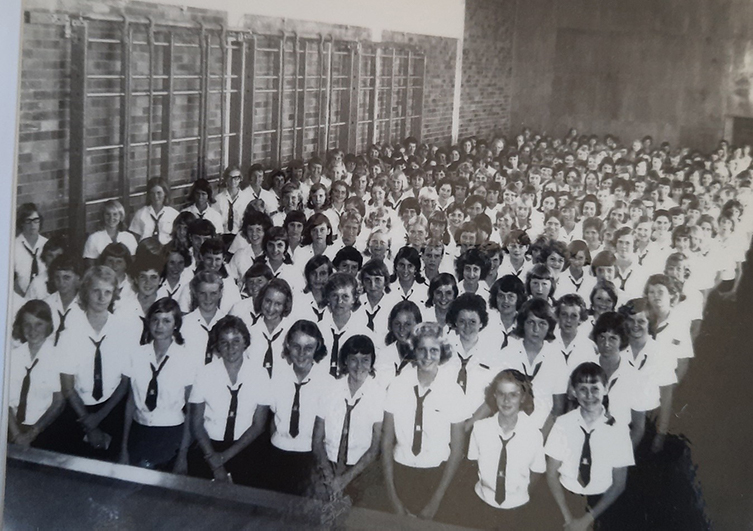
1965 Assembly. The wall bars stand on the southern wall of the gymnasium
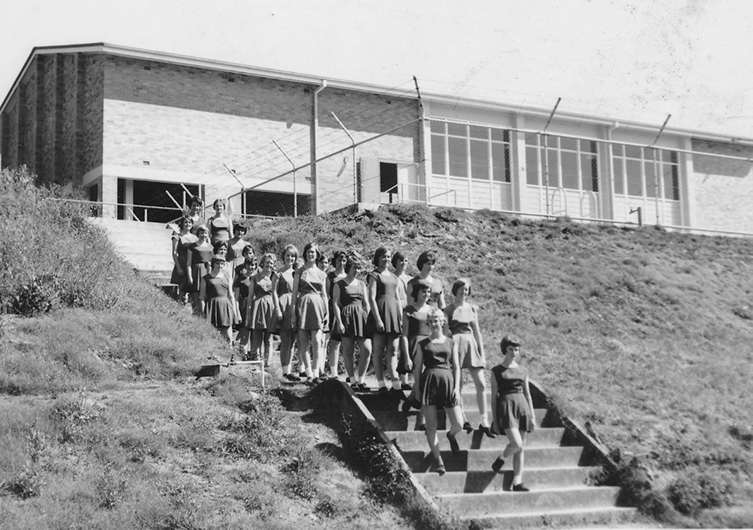
1962—the new gymnasium and pool from the ‘running track’
The wall bars were fixed to the southern side of the gymnasium and could be moved off the wall to create defined yet changeable spaces. Many activities and exercises could be done using the wall bars as a stand-alone object. Other pieces of equipment, such as special benches and ladders, could be attached and further connected to horizontal bars and balance beams to create an ever-changing environment for students to practice climbing, balance, flexibility, and strength exercises. It was essentially a much-upgraded version of the very basic transportable ladder in Miss Beanland’s 1888 gymnasium. The space also had a significant impact on the School’s Co-curricular Program, and the internationally developing sport of Women’s Artistic Gymnastics. 1952 marked the first-time women competed on all four apparatus at the Olympic games.
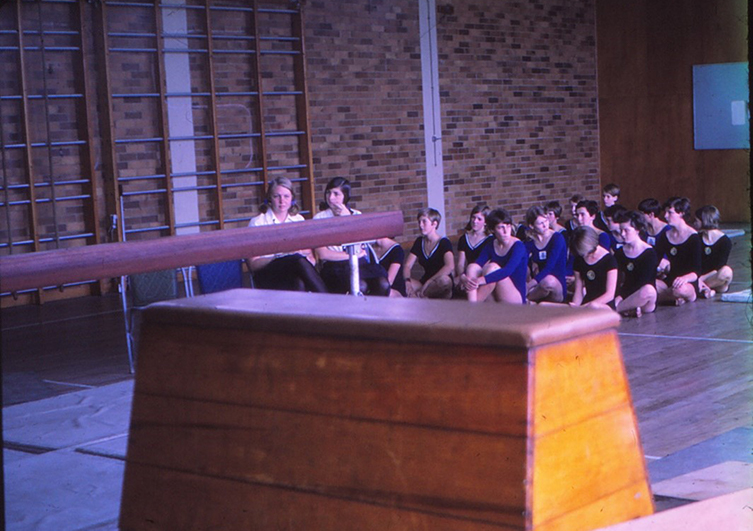
1967—QGSSSA Artistic Gymnastics Competition held in BGGS Gymnasium with wall bars against the wall
Just a few years later, in 1965, QGSSSA created its first Women’s Artistic Gymnastics competition. Girls Grammar, of course, entered alongside five other schools, and has participated every year since. The gymnasium’s wall bars were to form the backdrop of thousands of Physical Education and co-curricular Gymnastics lessons at Girls Grammar, even after the new gymnasium was expanded in 1979 and renamed as the auditorium.

1976—D Grade WAG pose on the beam in front of the original wall bars. L to R: Kay Bowen, Elizabeth Ham (splits), Elisa Swindon, Katrina Heer
The transition of the wall bars from the auditorium to the School’s most significant facility for Physical Education and Sport, to date, the McCrae Grassie Sports Centre, was made due to the Coordinator of Artistic Gymnastics, Nicole Robbins (nee Ives). For her, the wall bars were one of the first things she noticed about the School when she arrived in 1989 to commence 28 years of teaching at BGGS.
Completed in 1994, and opened on 15 March 1995, The McCrae Grassie Sports Centre represented a dramatic shift in the School’s approach towards Physical Education and co-curricular sport. In 1995 it was a purpose-built, state-of-the-art school sports facility. A specialised Women’s Artistic Gymnastics space was a feature of the building and, along with Basketball, Netball, Volleyball, Badminton, and other open spaces, the Sports Centre presented students with a safe and engaging environment to learn. Co-curriculum preferences, and the Physical Education curriculum, had changed dramatically since 1962. The role of creative movement and educational gymnastics had diminished and much of the equipment, once considered so vital to girls’ physical wellbeing, was discarded. Fortunately, one section of the wall bars was retained owing to Nicole Robbins’ suggestion and transferred to a wall adjacent to the Gymnastics sprung floor and continued to serve Grammar girls as they sought to develop flexibility, balance, and strength in co-curricular Gymnastics and in Physical Education classes for the following 20 years. As Nicole Robbins states ‘the wall bars represent one of the few pieces of gym equipment which are almost a replica of the original design. All other gym apparatus has been influenced by modern ergonomics’.
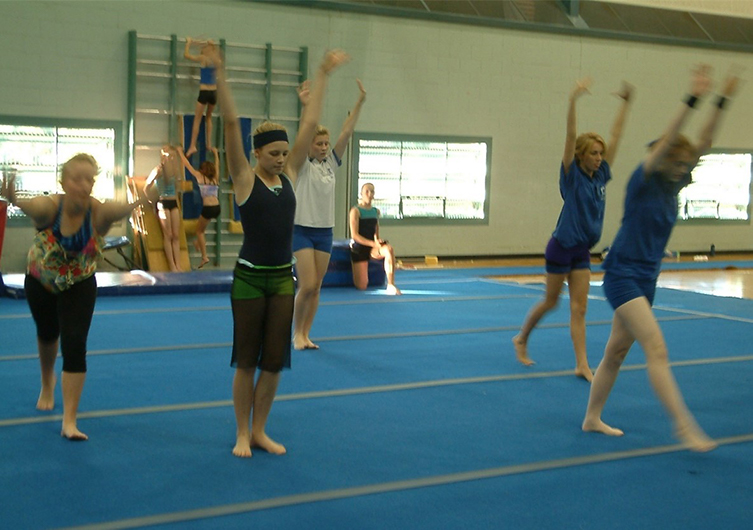
2005—Gymnastic Club training with the wall bars in use
Needing more, versatile space in preparation for the first intake of Year 7 in 2015, the School reluctantly retired the Gymnastics-specific space in the Sports Centre. With a new, multi-purpose wooden floor installed, the remaining section of the wall bars was removed and placed in storage.
Pleasingly and fortunately, the 1962 wall bars are currently undergoing restoration and, this year, will return to their original position on the northern wall of the Sports Centre. The paint is being removed and the timber is being refinished to highlight its natural beauty. The bars are being refurbished. Once returned to its place, the wall bars will present as a tangible yet subtle reminder to all students of the importance that Brisbane Girls Grammar School has placed on their physical development, their health, and wellbeing. For 60 years the wall bars have helped thousands of Grammar girls understand the power and beauty of strength and movement. They link the School’s 1995 Sports Centre to the 1962 Gymnasium and, in form and substance, remind us of the equipment that Sophia Beanland demanded in 1888, and that Josephine Bancroft so gleefully and adventurously swung from in 1912.
Mr Stephen Fogarty
Director of Health and Physical Education
References
Brisbane Girls Grammar School. (2010). Gazette: CXXXV 135 Years. Spring 2010. Brisbane Girls Grammar School.
Harvey-Short, P. (2011). To become fine sportswomen: the history of health, physical education and sport at Brisbane Girls Grammar 1875-2010. Brisbane Girls Grammar School
Robbins, N. Text message to Pauline Harvey-Short 9.3.23
Women in the Olympics – a brief history. Retrieved February 27, 2023 from https://www.ausport.gov.au/.
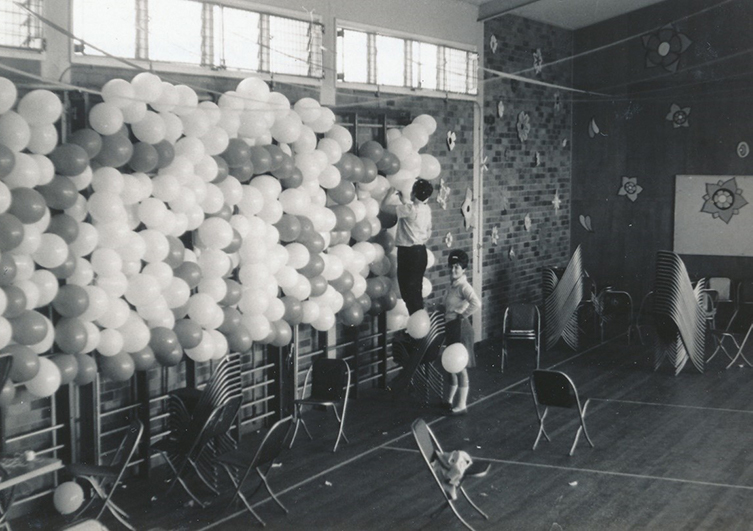
1967—the wall bars festooned with balloons in preparation for the Year 12 Formal


